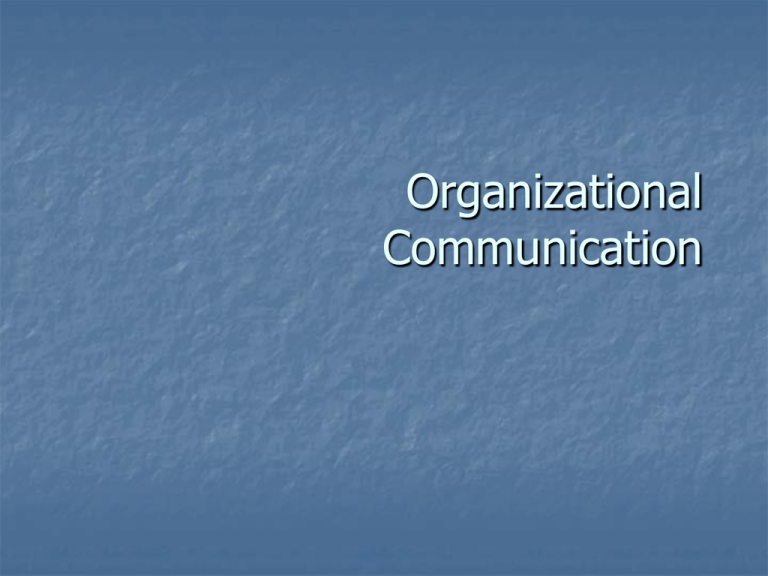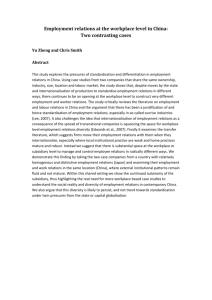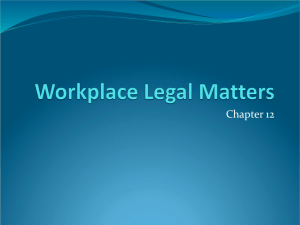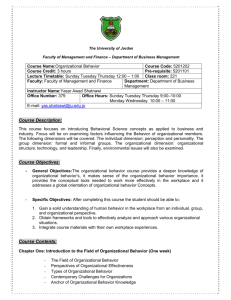Organizational Communication
advertisement

Organizational Communication What are we talking about? Communication that takes place within the context of an organization Organizational Communication is: the ways in which groups of people maintain structure and order through their symbolic interactions and allow individual actors the freedom to accomplish their goals What is Structuration? The process of forming and maintaining structures through verbal and nonverbal communication, which establishes norms and rules governing members’ behaviors Why Should You Learn About Organizational Communication? So you can ask informed questions about everyday business practices To develop communication skills that improve your ability to succeed in the workplace To improve the quality of your work life Types of Organizations Economic Orientation – products/services Political Orientation – generate and distribute power and control Integration Orientation – mediate and resolve discord Pattern Maintenance Orientation – promote cultural and educational regularity Central Features of Organizations Types of Organizational Structures Traditional bureaucratic structures Division of labor – how work is divided Chain of command – lines of authority Downward communication – superiors initiate messages to subordinates Central Features of Organizations Types of Organizational Structures Participatory structures Value individuals’ goals needs and feelings while pursuing organizational objectives Encourage participation of members Quality circles Autonomous work groups Alternative work groups Central Features of Organizations Communication Networks Formal communication networks – follow prescribed channels of communication Informal communication networks – emerges from the natural social interaction among organization members Formal Communication Flow Central Features of Organizations Organizational Assimilation Organizational culture Formal sources of information Informal sources of information Communication Competence in the Workplace Behavioral Characteristics of Competent Communicators Immediacy – psychological closeness Supportiveness – empathy, sense of personal control Strategic ambiguity – purposeful use of symbols to allow multiple interpretations Interaction management – patterns of interaction to move among topics Communication Competence in the Workplace Conflict Management Skills Avoidance – deny the existence of conflict Competition – conflict is seen as a battle with a winner and a loser Compromise – willingness to negotiate and lose some of your position if the other party is willing to do the same Accommodation – set aside your views in favor of the other’s Collaboration – thoughtful negotiation and reasoned compromise Communication Competence in the Workplace Customer Service Encounter – moment of interaction between the customer and the firm Customer Service Skills Compliance gaining strategies – promise, threat, pre-giving, moral appeal, liking Emotional labor – jobs in which employees are expected to display certain feelings in order to satisfy organizational role expectations The Dark Side of Workplace Communication Aggressive Communication Verbal aggressiveness Workplace aggression Workplace violence Sexual Harassment Unwelcome, unsolicited, repeated behavior of a sexual nature Quid-pro-quo – this for that Hostile work environment – workplace conditions that are sexually offensive, initimidating, or hostile











